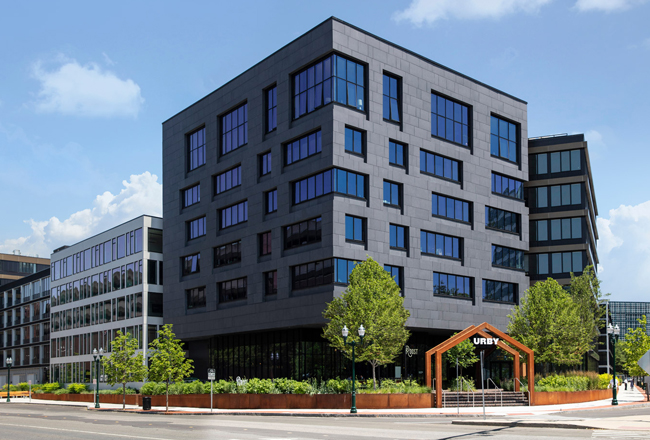Architect Leigh Overland is building a home for himself and his wife along Ash Creek in Fairfield. But the construction site looks rather different from other residential sites scattered around the town ”“ the traditional wood framing is conspicuously absent, replaced by large interconnected slabs that look like oversized Styrofoam but are actually a building technology called insulated concrete forms (ICF).
“ICF is a block that is almost like a Lego block,” Overland said. “It is hollow in the middle and has two-and-three-quarter inches of foam on each side. It’s held together by webs that snap together to create all the outside walls. And then ultimately, you pour concrete in the middle. That gives it strength.”

ICF is not a new technology ”“ it was patented in the 1960s, although earlier prototypes were developed after the turn of the 20th century. Overland noted it is more prevalent across the Atlantic, where residential construction has traditionally used more solid components than wood.
“Our European neighbors are used to designing with concrete or stone or masonry,” he said. “In our country, we”™re used to designing with wood. I get European clients that come here and say, ”˜Wow, it’s so cool that there’s an architect that’s designing with concrete, because I was wondering why you Americans design temporary buildings.”™”
Overland also lamented that wood has become an increasingly expensive commodity, thus resulting in higher construction costs. Sustainability issues have also been a problem in keeping wood in supply.
“Lumber is a product that has to be grown,” he said. “For the first 30 years, we used lumber, and for renovations we still use lumber. But I wouldn’t think possibly designing a new home or building with lumber anymore. The quality of lumber is very poor ”“ they grow these trees way too fast, and the rot and mildew in lumber starts immediately after it’s built. It can catch on fire, and you’ve seen them blow away when tornadoes or hurricanes come through.”
In comparison to wood, Overland noted that ICF offers the homeowner a fireproof residence that will not be blown to pieces in heavy storms. He also pointed out the soundproofing element in an ICF home is infinitely superior to that of wood structures. In addition, energy bills could be cut by up to 70%.
For homeowners commissioning a new property, Overland said that ICF saves on time and costs.

“In a traditional route, you have to pour a foundation,” he said. “Then you have your framer come in and build the wood walls. Then you have to put the plywood on the outside of the wood walls, you’ve got to connect to all the wood walls with all these different anchors and connectors. Then you have to put a spray foam insulation in there. Then you have to put a weather barrier on it. And now you’re ready to start putting your electrical and your sheetrock and siding on.
“With ICF,” he said, “all you’re doing is snapping these blocks together. It’s already insulated. It doesn’t take any plywood sheathing, so there’s no weather barrier required. It’s already insulated and you have no connectors because it already far exceeds the code in its strength. And now you’re also ready to just put your electrical in, so it saves on five different subcontractors.”
Overland has already completed ICF single-family homes in Brookfield, Danbury, Easton and New Canaan plus Shelter Island, New York, as well as townhomes in Stamford.
The construction on his Fairfield home, a two-story property with 3,000 square feet, is being webcast in a live feed, and Overland has been fielding compliments and inquiries on the project.
“I’ll get emails from people saying, ”˜Well, that’s so great that you’re bringing this to the public,”™” he said. “We want the other architects to learn this.”
To further his educational goal, Overland launched NextGreatAmericanHomes.com to offer information on ICF”™s value in construction.
“We developed this website to get a discussion started for architects, builders, interior designers and the public,” he said. “They can start reading about the innovation in a changing world. Now, ICF is not necessarily innovative, it’s just now becoming very popular and in my opinion will become the standard of construction.”
On a personal level, Overland is eager for construction to be completed so he can take advantage of the health benefits of living in a home where mold and mildew cannot take root.
“I’ve already lived in regular houses for too many years,” he said. “I think I’ve already breathed enough pollutants, but at least in my last few decades I’ll be healthy.”






















